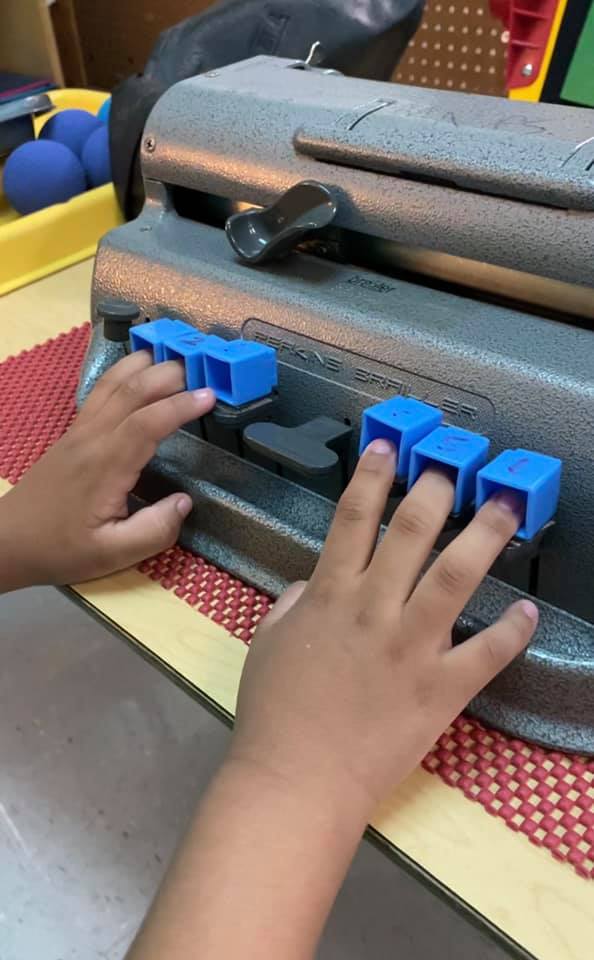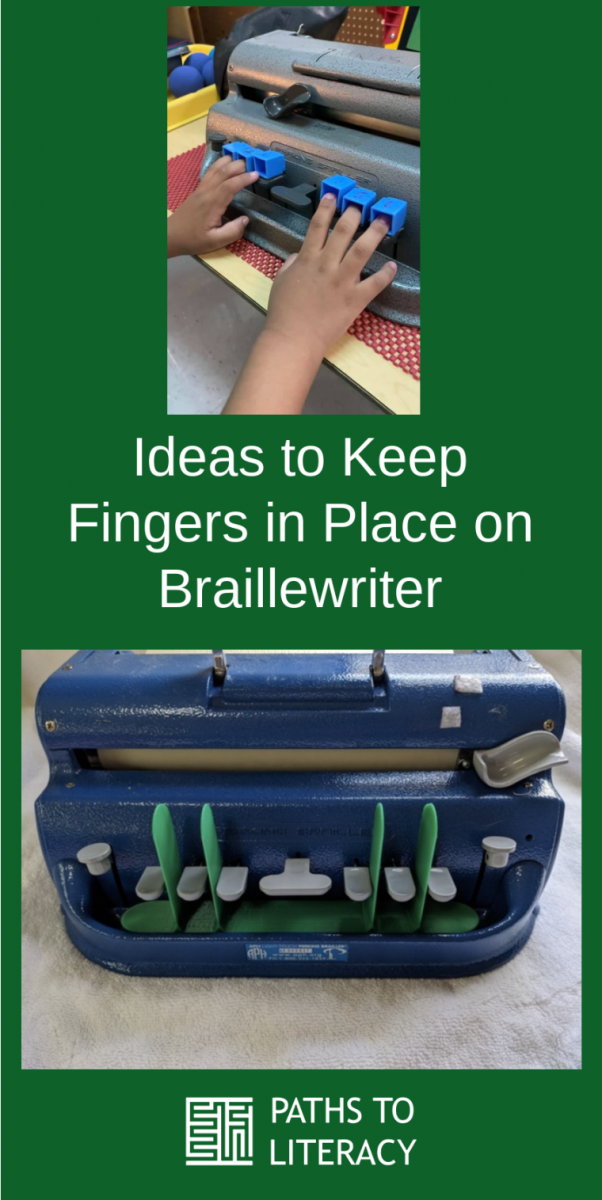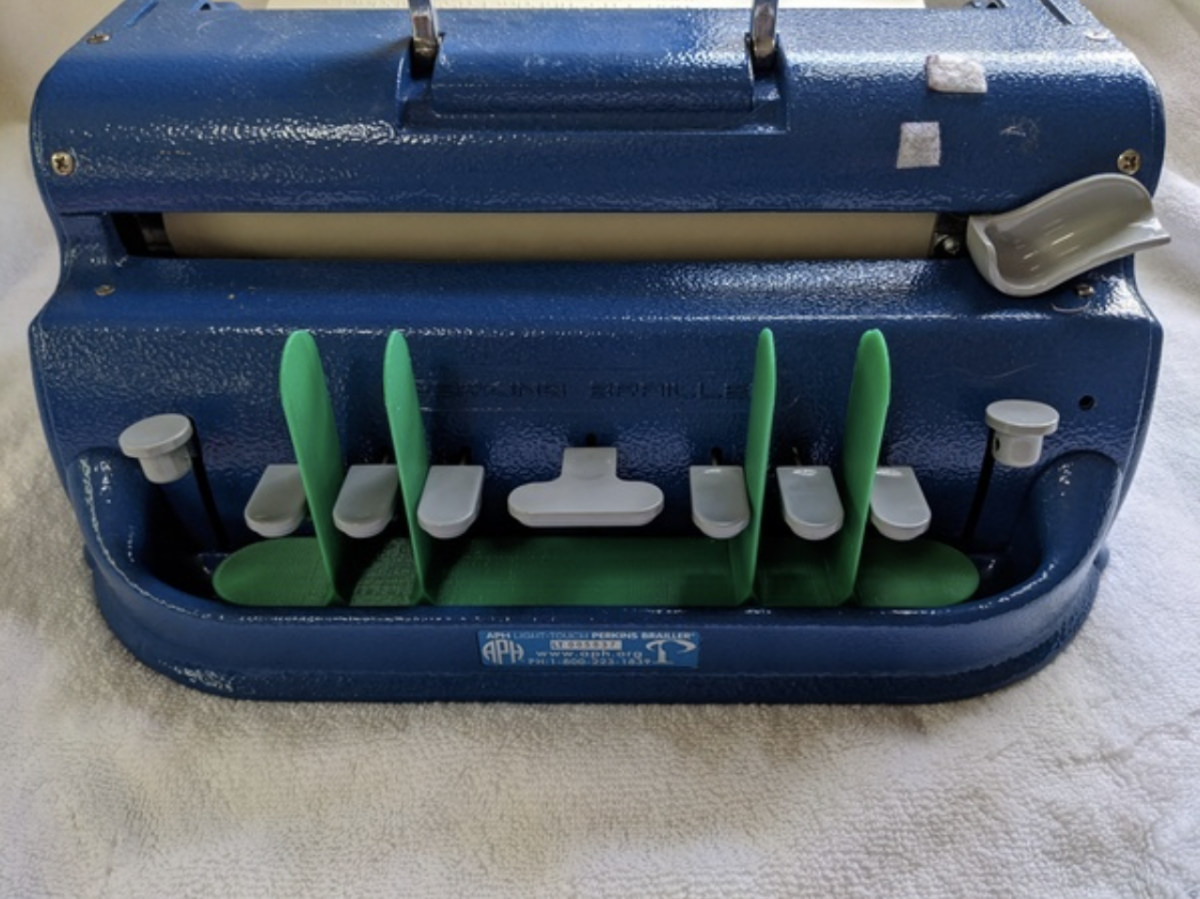Keeping Fingers in Place on Braillewriter
Many young children and beginning braille users struggle to keep their fingers on the correct keys when using a braillewriter. While we always want to encourage them to keep their fingers in the correct place, sometimes it's helpful to create ways to make this easier at first. A number of people have shared ideas on how they do this.
3-D Printed Finger Guide
Jim Allan, who is the Accessibility Coordinator at Texas School for the Blind and Visually Impaired (TSBVI), shared a design for a 3-D printed finger guide that is free to download. This design has simple vertical strips that come up between the keys, preventing fingers from slipping onto a neighboring key.
The guide slides under the keys on the braillewriter. It does not interfere with the operation of the keys or the quality of the braille produced.
Others recommended a similar design using popsicle sticks, tongue depressors, or cardboard as vertical separators between the keys. They can be attached to a piece of styrofoam.
Unifix Cubes

TVI Jennifer Brown O'Sullivan attached Unfix cubes to the keys of the braillewriter. She attached them with Velcro, so that when the student is more proficient, she can take the cubes off. She notes that his little fingers fit perfectly into the cubes and there is no pain. She believes it has really made a big difference.
Some teachers call these "finger garages" and they report that this helps to motivate children who like cars (and who know what garages are!).
This design seems to work well for students who tend to lift their fingers high off of the keys.


